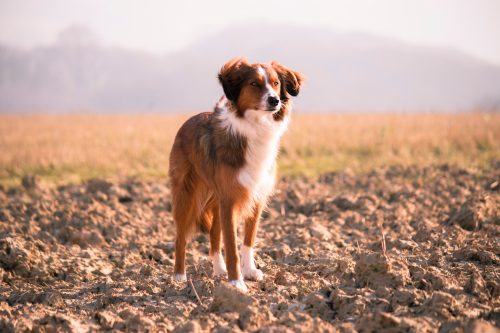Researchers who imitated the sniffing mechanism of dogs were able to improve the performance of commercial odor detectors.

By: Ofir Marom
Dogs have an excellent sense of smell, and therefore, for a long time, humans have used them to detect and identify dangerous substances, to find missing people in disaster areas, and more. The high sensitivity of dogs to smell is usually associated with the large amount of smell receptors found in their nose. The dogs are an ideal and a source of inspiration for the engineers and scientists, who are trying to develop artificial means that will be able to detect a smell with the same sensitivity that dogs do, but so far without success. Most of the technological developments have concentrated on the creation of different types of sensors, but only a little attention has been given to another part of the dog's sniffing process - the act of sniffing itself.
Anyone who has ever watched a dog try to smell knows that it does so in a characteristic sniffing manner. Previous studies that sought to describe in detail the act of sniffing found that the dog inhales and exhales air through the nostrils at a rate of about five times per second. During inhalation, the air, which is about 1-2 cm from the dog's nose, enters the nostrils in a uniform and orderly flow. During exhalation, the unique structure of the nose and the nostrils divert the jet of air coming out of the nose to the side and down. While sniffing, the jets of hot air coming out of the nose meet a surface and cause the evaporation and suspension of odors, which immediately afterwards enter the nose during inhalation. In addition, when sniffing a surface, the specific flow direction in which the jet of air exits the nose has two important purposes: first, in this way, the removal of odors that are directly in front of the nose is avoided, which immediately after exhalation will enter the nose during inhalation. The second goal is to create a backward movement of air from the nose, which actually causes the suction of air that is in front of the nose at a relatively large distance and thus expands the aerodynamic range of sniffing.
A team of researchers who examined the sniffing mechanism realized that all the sensing devices today sample the air differently than the dogs do, and in fact they continuously and unidirectionally draw the air into the measuring chamber. The researchers decided to examine how the performance of those devices would change if they started "sniffing" like the dogs. For this purpose, an exact replica of a dog's nose (a Labrador weighing 29.5 kg, to be exact) was printed on a XNUMXD printer. First, the model of the nose was attached to a suction system that simulated the inhalations and exhalations of the dog. Using advanced equipment in the laboratory, the researchers were able to show that a movement of air was created around the printed model, in a manner similar to the mechanism described from observations of live dogs. The researchers used the printed model to collect smell samples of TNT explosive. They were able to show that indeed the sniffing mechanism and the particular structure of the dog's nose make it possible to sample almost ten times more material compared to a uniform suction of the air.
In the next step, the researchers took commercial odor detectors. They produced, using a 18D printer, an add-on designed inspired by the structure of a dog's nose. The plug was connected to the entrance of the detectors and caused the devices to draw air samples in a manner similar to the sniffing mechanism. After a series of tests it was found that when the detector "sniffed" like a dog, the detection ability of one detector increased up to 16 times and up to XNUMX times for another detector, designed to detect explosives. Undoubtedly a dramatic improvement compared to the simple engineering change required to be made in the detector.

2 תגובות
To my father
I suppose that with a little more effort, sophistication and financial investment,
It will also be possible to develop a detector that can bark and shit while sniffing.
is that what you meant ?
Among the advantages of the detector it is worth noting that it does not bark or shit on the sidewalks.